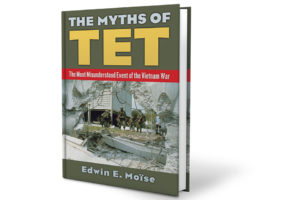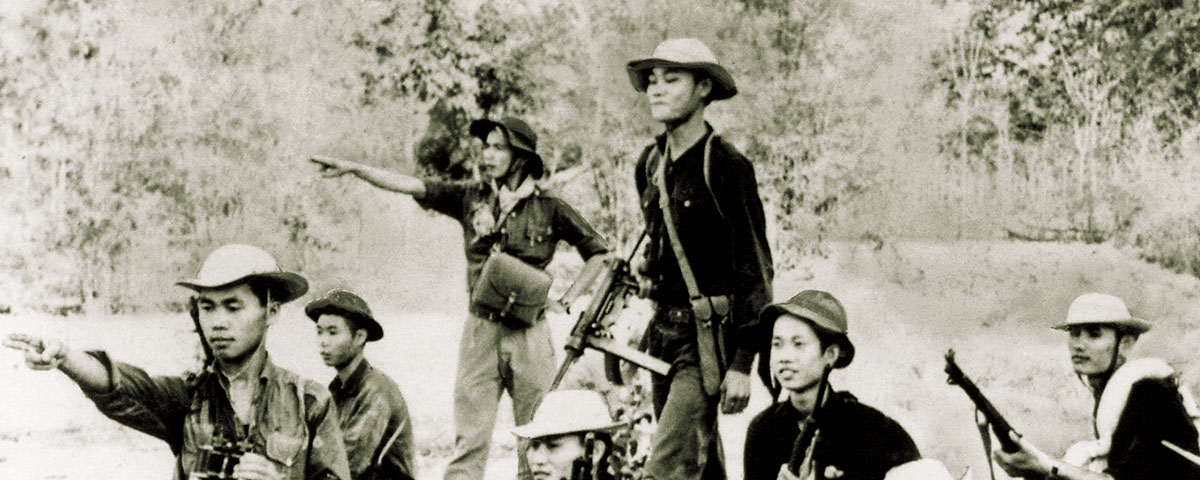
Fought across the length and breadth of South Vietnam, the 1968 Tet Offensive ended in a military defeat for the Communists but, according to conventional wisdom, crippled President Lyndon B. Johnson politically and undermined public support for the war because of its scale and casualties. While broadly correct, the accepted narrative gets key aspects of the Tet Offensive wrong, as Edwin E. Moïse demonstrates forcefully in The Myths of Tet.
In Vietnam, the U.S. military relied on statistical metrics—including the oft-derided “body count” and routine intelligence estimates of enemy combat strength—to measure progress on the ground. By 1967, intelligence officers at Military Assistance Command, Vietnam, under pressure from elements inside the organization and the Johnson administration, were engaged in a deliberate attempt to falsify estimates of enemy combat forces listed in the monthly Order of Battle Summary. Analysts at the CIA argued that the MACV numbers grossly underestimated enemy strength in South Vietnam.
Mining a dizzying array of archival materials, Moïse, a history professor at Clemson University, covers the “order of battle” dispute in exceptional detail and exposes the depths to which MACV falsified the numbers on enemy strength in the months preceding the Tet Offensive. Stunningly, MACV later acknowledged that Communist forces in South Vietnam in February 1968, after nearly a month of heavy casualties, still exceeded the enemy-strength estimates released before the attacks.
The lower estimates reinforced the public relations campaign the White House initiated in the fall of 1967 to convince Americans that the United States and its allies were winning in Vietnam. Gen. William Westmoreland told reporters in November that Communist forces had not won a significant battle in more than a year.
Striking suddenly in January 1968 during the Tet Lunar New Year celebration, the North Vietnamese Army and Viet Cong targeted Saigon and other sites all across the country, shocking Washington and calling into question the optimistic statements by Westmoreland and other military officials.
Contrary to many accounts of the offensive, the initial Communist attacks were not especially well-planned or carefully coordinated. The attacks were set for the first night of Tet, but there was confusion over whether the modified North Vietnamese calendar or the more traditional South Vietnamese calendar would be used for the start date.
As a result, some Communist units attacked on Jan. 30, rather than Jan. 31. Many units did not receive orders to attack until late January, leaving commanders little time to develop assault plans. Others arrived too late, despite marching for hours in the hot sun, to attack on the first night of the offensive.
Moïse reveals that the fighting lasted longer and was considerably more costly than is often acknowledged. Echoing many early histories of the offensive, U.S. Sen. John McCain, for example, recently claimed that only in Hue and at Khe Sanh “did major operations continue longer than a week.” Yet four of the deadliest weeks for American forces in Vietnam occurred between Feb. 11 and March 9, long after major operations had purportedly ceased. The offensive killed about 3,800 Americans, nearly four times the number often given.
Fittingly, an entire chapter is devoted to the media’s coverage and portrayal of the Tet Offensive, a contentious subject among scholars and historians. The media impact on public opinion was more complex than many realize. A Gallup poll taken in February, after the initial reports of the attacks, indicated that 61 percent still considered themselves “hawks” rather than “doves” on the war. By March, after weeks of unrelenting combat and mounting American casualties, only 41 percent considered themselves hawks.
The Myths of Tet is a balanced, thoughtful and, quite frankly, long overdue correction to the mistruths, half-truths and outright falsehoods surrounding the Tet Offensive.
First published in Vietnam magazine’s February 2018 issue.





